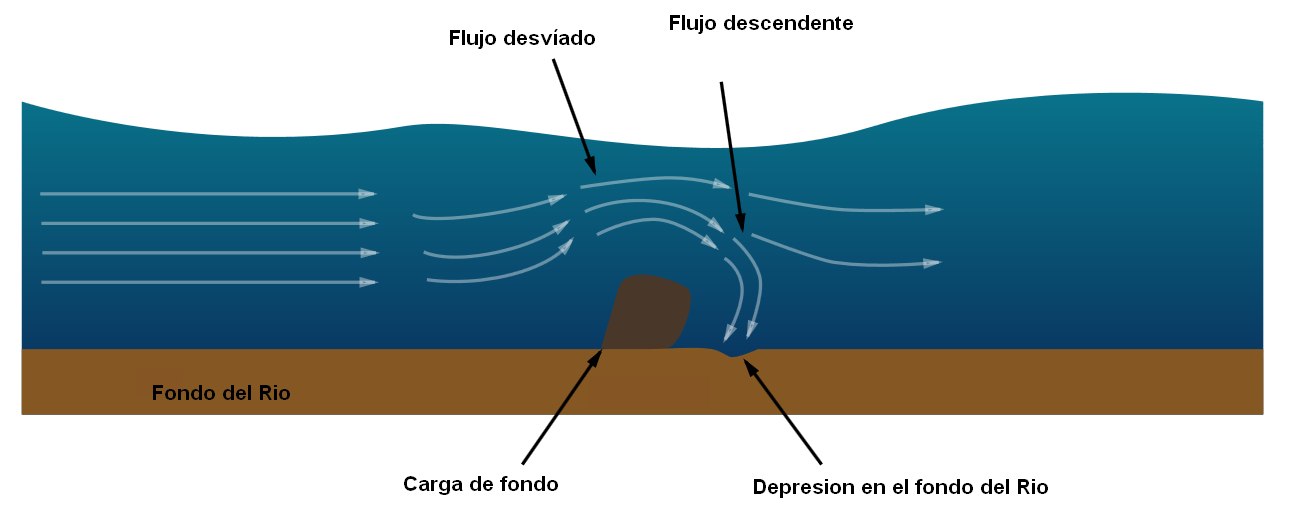Español
Localización
El río Tamuxe es un río de la provincia de Pontevedra, Galicia, España, también conocido como Carballas, es un afluente del río Miño en su tramo final, a pocos kilómetros de su desembocadura en el océano Atlántico. Nace en el ayuntamiento de Oya, avena el Valle del Rosal y desemboca en Pías, San Miguel de Tabagón, en el concejo de El Rosal.
Es un río corto pero que llega a tener un abundante caudal. Posee numerosos molinos y pesquerías que además de la pesca deportiva ofrecen la posibilidad de bañarse con zonas amplias y profundas, mayores de dos metros, en el verano.
En su cabecera se encuentran los pozos de Loureza, en el lugar del mismo nombre dentro del concejo de Oya. En ellas es posible nadar, tirarse al agua desde diferentes alturas y tomar el sol, además es habitual la práctica del nudismo.
Geomorfologia
Los "potholes" son agujeros cilíndricos perforados en el lecho de un río que varían en profundidad, diámetro desde unos pocos centímetros hasta varios metros. Se encuentran en el curso superior de un río donde tiene suficiente energía potencial de erosionar verticalmente y su flujo es turbulento. En el curso superior de un río, su carga es grande y se transporta principalmente por tracción a lo largo del lecho del río. Cuando el agua fluye y encuentra de objetos en el fonfo, este es forzado a pasar sobre él y se forman corrientes descendentes detrás de la carga de fondo en remolinos de corrientes cortantes. Estas corrientes erosionan el lecho del río y crean pequeñas depresiones en ella.

A medida que estas depresiones se profundizan, los guijarros pueden quedar atrapados en ellos. Como resultado de las corrientes giratorias, los guijarros comienzan a taladar en las depresiones haciéndolos más circulares, más anchos y más profundos. Los guijarros sólo serán capaces de erosionar el lecho de un río, si la roca de los guijarros esta formada de un material más fuerte que la roca del lecho del río

Para registrar este earthcache, enviame um correoeletrónico com la respuesta a las seguintes preguntas:
1) ¿Cual es el primer origen de los "potholes"? ¿En que parte del rio se suelen formar y porque?
2) De espaldas a la naciente, a la derecha y cerca de la orilla, puedes ver un pothole algo diferente ¿Seguira aumentando su tamaño?¿Porque?
3) En las coordenadas dadas, a la derecha de la cascada, se puede ver un "pothole" de pequeño tamaño, el menor del lugar. Dimne su diametro y su profundidad
4) Añade una fotografia tuya en el local, u otra en la que se pueda ver algún objeto, o tu nick en un papel
-Si crees que as concluido con exito los objetivos de este Earth Cache, y me ha enviado todas las respuestas solicitadas, puede hacer el log. Luego yo comprobaré que son correctas, y si hay cualquier problema me pondre en contacto para arreglarlo.
-Logs sin respuestas enviadas previamente, seran borrados sin aviso
English.(google translate)
Location
The Tamuxe is a river in the province of Pontevedra, Galicia, Spain, also known as Carballas, is a tributary of the Miño river at the end, a few kilometers from its mouth in the Atlantic Ocean stretch. Born in the city of Oya, oats Rosal Valley and empties into Pious, San Miguel de Tabagón, in the "O Rosal" municipality.
It is a short river but comes to have an abundant flow. It has numerous mills and fisheries besides the sport fishing offer the opportunity to swim with broad and deep, over two meters in the summer areas.
At its head Loureza wells are in the place of the same name in the municipality of Oya. They can swim, jump into the water from different heights and sunbathing, plus usual practice nudism.
Geomorphology
Potholes are cylindrical holes drilled into the bed of a river that vary in depth, diameter from a few centimetres to several metres. They’re found in the upper course of a river where it has enough potential energy to erode vertically and its flow is turbulent. In the upper course of a river, its load is large and mainly transported by traction along the river bed. When flowing water encounters bedload, it is forced over it and downcuts behind the bedload in swirling eddie currents. These currents erode the river’s bed and create small depressions in it.
As these depressions deepen, pebbles can become trapped in them. As a result of the eddie currents, the pebbles drill into the depressions making them more circular, wider & deeper. Pebbles will only be able to erode a river’s bed though if the rock the pebble’s made of is stronger than the rock the river bed is made of.

To log this earthcache, send me an email /message with the answer to the following questions:
1) What it is the first origin of the potholes? What part of the river are they often formed and why?
2) Back to the nascent, right and near the shore, you can see a somewhat different pothole, it will be continue increasing its size? Why?
3) In the given, to the right of the waterfall, coordinates can see a very small "pothole", the smallest one. Tell its diameter and depth
4) Add a photo of yourself at the place, or another in which you can see an object, or your nick on a piece of paper
-If you believe you have successfully completed this Earth Cache goals and has already sent to me all the requirements as requested, Please, feel free to log it as found. Later i will verify the requirements sent and, if necessary, contact you in order to make the necessary corrections to your log.
-Logs without answers, will be deleted without notice.
